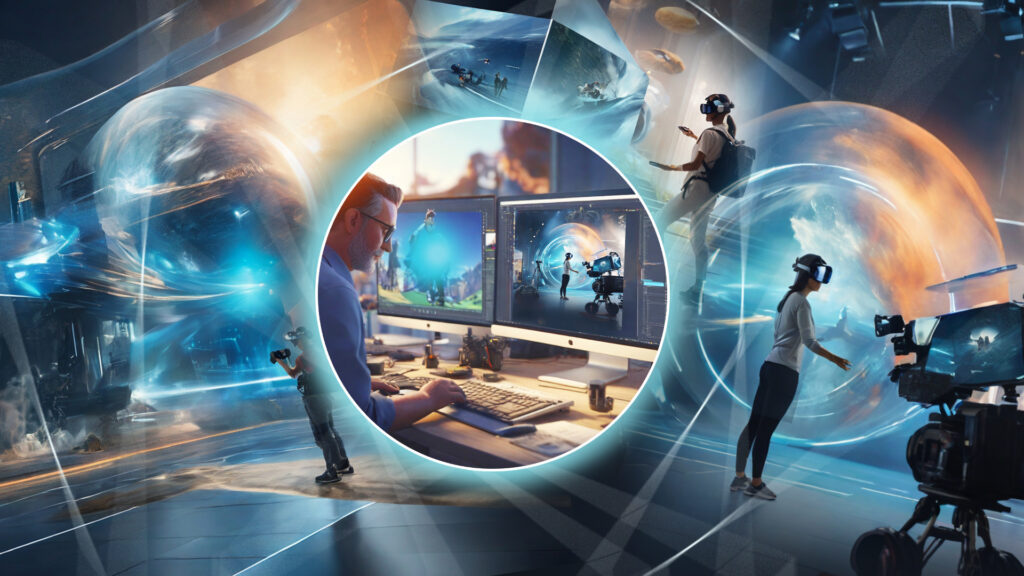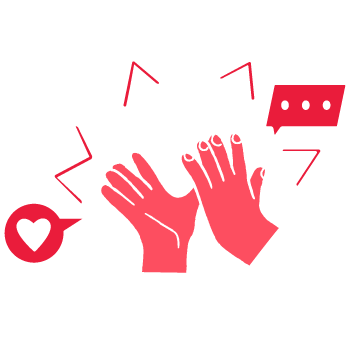
image source: toonz
The animation industry is constantly evolving, and in 2025, one of the biggest game-changers is Virtual Reality Animation. With advancements in immersive animation technology, traditional animation techniques are merging with virtual reality (VR) to create a brand-new storytelling experience. But is VR truly the future of animation?
As we explore the future of animation 2025, we’ll dive into the role of VR in the animation industry, examine cutting-edge VR animation trends, and discuss how 3D animation with VR is revolutionizing the creative world. We’ll also look at how next-gen animation techniques are redefining content creation and compare augmented reality vs virtual reality in animation to understand their distinct impacts.
Let’s take a closer look at how VR is shaping the animation industry and whether it holds the key to the future of storytelling.
What Is Virtual Reality Animation?
Virtual Reality Animation involves creating animated content in a fully immersive, 3D virtual environment. Unlike traditional animation, which is viewed on a flat screen, VR animation allows users to step inside the animated world and interact with the surroundings.
Key Features of VR Animation:
- 360-Degree Viewing Experience – Viewers can explore animated scenes from different angles.
- Interactive Storytelling – Audiences can engage with characters and influence the storyline.
- Full Immersion – Instead of watching animation, users experience it firsthand.
- 3D Realism – VR enhances the depth and realism of animated worlds.
These elements make VR in the animation industry an exciting frontier, pushing the boundaries of creativity and audience engagement.
Future of Animation 2025: The Rise of VR
The future of animation 2025 is heavily influenced by advancements in VR technology. With the increasing demand for immersive content, animation studios and independent creators are embracing VR as a powerful tool for storytelling and entertainment.
Why VR Is Changing Animation:
✔ New Storytelling Possibilities – VR enables non-linear and interactive narratives.
✔ Enhanced User Engagement – Immersive experiences keep audiences captivated longer.
✔ Growing VR Market – With more affordable VR headsets, demand for VR animation is rising.
✔ Technological Advancements – AI and machine learning are improving VR animation tools.
As animation transitions from passive viewing to active participation, the industry is redefining what’s possible in visual storytelling.
VR in the Animation Industry: A Game-Changer
The introduction of VR in the animation industry is transforming how animated content is created, distributed, and consumed. Major film studios, gaming companies, and independent animators are leveraging VR to develop more engaging, interactive, and immersive experiences.
Industries Benefiting from VR Animation:
- Entertainment – Animated VR movies and VR-enhanced storytelling experiences.
- Gaming – VR-based animated characters and interactive game environments.
- Education – VR learning modules with animated simulations.
- Marketing & Advertising – Brands using VR-animated ads to engage customers.
- Healthcare – VR animations for medical training and therapy applications.
With applications across multiple fields, the role of VR in the animation industry is expanding rapidly.
3D Animation with VR: A New Standard
While traditional 3D animation has long been a staple of the industry, 3D animation with VR takes it to the next level. By integrating VR, animators can create more realistic environments and enhance audience engagement.
How VR Is Enhancing 3D Animation:
- Virtual Production Studios – Animators work within VR environments to craft 3D worlds.
- Motion Capture & VR – Real-time motion tracking improves character animations.
- Interactive 3D Models – Users can manipulate and interact with animated objects in VR.
- Collaboration in VR – Multiple animators can work in a shared VR space.
As technology improves, 3D animation with VR is expected to become a mainstream production method, further cementing VR’s role in animation.
Immersive Animation Technology: A New Era of Creativity
The rise of immersive animation technology is driving a creative revolution. Whether it’s through VR storytelling or interactive experiences, these innovations allow artists to create animations that feel more lifelike and engaging.
Innovative Technologies Shaping VR Animation:
🔹 AI-Assisted Animation – Automates complex animation processes in VR.
🔹 Haptic Feedback in VR – Enhances the sense of touch in animated VR experiences.
🔹 Real-Time Rendering – Reduces production time, enabling faster animation creation.
🔹 Cloud-Based VR Animation Tools – Facilitates remote collaboration for animators.
These next-gen animation techniques are helping studios push the limits of creativity and bring their visions to life faster than ever before.
VR Animation Trends to Watch in 2025
As VR technology advances, several VR animation trends are emerging that will define the industry’s future.
Top VR Animation Trends in 2025:
✅ Metaverse & VR Animation – VR-animated content will play a crucial role in metaverse experiences.
✅ Interactive VR Films – Viewers will have the ability to shape animated narratives.
✅ VR Animation for Social Media – Short-form VR-animated content will gain popularity.
✅ AI-Driven VR Animation – AI tools will assist in generating and refining VR animations.
✅ Educational VR Animation – VR-based animated training simulations will expand in various industries.
These trends indicate that Virtual Reality Animation is not just a passing phase but a lasting shift in the animation world.
Next-Gen Animation Techniques: How VR Is Leading the Way
The evolution of next-gen animation techniques is driven by VR’s capabilities. Unlike traditional animation, which relies on static screens, VR animation creates fully explorable worlds.
Key Next-Gen Animation Techniques in VR:
- Volumetric Capture – Creates lifelike, 3D animations in real-time.
- Procedural Animation – Uses AI to generate realistic movements in VR environments.
- 360-Degree Animation – Offers a panoramic, immersive viewing experience.
- VR-Based Storyboarding – Allows animators to plan scenes in a virtual space.
These techniques are redefining animation, making VR a cornerstone of the industry’s future.
Augmented Reality vs Virtual Reality in Animation
While VR is dominating the animation space, augmented reality vs virtual reality in animation is a hot debate. Both technologies offer unique advantages but serve different purposes.
Comparing AR and VR in Animation:
| Feature | Augmented Reality (AR) | Virtual Reality (VR) |
|---|---|---|
| Definition | Overlays animated content onto the real world | Creates a fully immersive digital environment |
| Usage | AR filters, mobile apps, and real-world overlays | VR films, games, and simulations |
| Interactivity | Limited interaction with the environment | Full interaction within a virtual world |
| Devices | Smartphones, AR glasses | VR headsets, motion controllers |
While AR enhances real-world experiences, VR offers complete immersion, making Virtual Reality Animation a game-changer for storytelling and entertainment.
Conclusion: Is Virtual Reality the Future of Animation?
As we move forward, Virtual Reality Animation is proving to be a revolutionary force in the industry. With cutting-edge VR animation trends and next-gen animation techniques, the shift towards immersive storytelling is undeniable.
From 3D animation with VR to AI-powered tools, the future of animation 2025 is more dynamic and interactive than ever before. While augmented reality vs virtual reality in animation continues to be debated, VR’s potential for immersive content creation sets it apart as a dominant force in animation’s future.
So, is VR the future of animation? The answer is a resounding YES. As technology advances, VR in the animation industry will only continue to grow, reshaping how we experience animated content for years to come.





